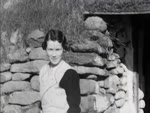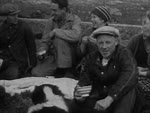ENOUGH TO EAT?: The Nutrition Film

This video is not available to view remotely
Full length video - onsite only
Please read Understanding catalogue records for help interpreting this information and Using footage for more information about accessing this film.
Title: ENOUGH TO EAT?: The Nutrition Film
Reference number: 0837
Date: 1936
Director: d. Edgar Anstey A.R.F.P.
Sponsor: Gas Industry
Production company: Merton Park Studios
Sound: sound
Original format: 35mm
Colour: bw
Fiction: non-fiction
Running time: 21.03 mins
Description:
Made in 1936, this documentary set out to promote the principles of healthy eating, as part of a wartime food policy.
See also bfi Screenonline for further information on this film:- http://www.screenonline.org.uk/film/id/513824/index.html [last accessed 17/8/2010]
Credits:
ass. d. Frank Sainsbury
ph. Walter Blakely, Arthur Fisher
sd. rec. Sharles A. Poulton (on RCA Photophone)
comm. s. Julian S. Huxley
Shotlist: Credits (1.03) montage of newspaper headlines on nutrition and public health (1.22) Huxley makes a few introductory statements (1.35) shots of Sir Garland Hopkins (?) the late President of the Royal Society and Sir John Boyd Orr, Director of the Rowett Institute Aberdeen and the Imperial Bureau of Animal Nutrition (2.28) Huxley talks of Sir Robert McAllison's work in India over footage of people from the north and south of India (2.47) wallchart at the Rowett Institute showing results of long-term feeding of rats in controlled experiment (2.54) shots of two rats, one has been fed a "working-class" diet, the other a "good" diet. (3.07) shots of boys at a private school, Christ's Hospital School exercising and in refectory (3.35) the boys are weighed and measured by school doctor (3.57) working class children playing in street (4.00) ext. Christ's Hospital School (4.04) boys exercising in yard (4.08) boys playing in council school playground (4.16) council and private schools' refectories (4.23) Huxley introduces more of Boyd Orr's work (4.46) Energy foods - carbohydrates and fats. Body building foods - animal proteins. Protective foods - minerals and vitamins (6.02) gvs fresh food stalls in street market (6.13) Graphics and graphs illustrating expenditure on food by 6 different social groups and showing the iron and calcium deficiencies in each group (8.39) shot of Boyd Orr in his study (8.49) gvs children playing in street and a street market (9.04) gvs workmen eating lunch on building site (9.10) shopping street in working class area (9.16) housewives are interviewed in their homes (9.26) two doctors, McGonigle and Borland, engaged in a similar type of study, discuss their findings (10.07) housewife describes the kind of food she buys and how much she can afford to spend (11.27) Huxley, Secretary of the Zoological Society, favourably compares foods given to animals in zoos to that of some humans (11.58) queue of men outside employment exchange (12.03) gvs boys in council school playground (12.06) horse-drawn harvester in field (12.13) woman milking a cow (12.17) gvs Walter Elliot amongst working-class children on the first day of the scheme to introduce cheap milk to schools (12.47) int. Shoreditch Burgh Council Centre in London for nursing and expectant mothers, with small incomes, filmed at mealtime (13.09) gv's toddlers being fed out-of-doors (13.35) gvs older children eating indoors (13.47) mothers receiving tuition on diet at the Maternity and Child Welfare Clinic (14.11) Herbert Morrison, leader of London County Council, describes how the Council is combatting malnutrition (14.27) int. council school refectory (15.14) group of children at Special Nutrition Centre (15.30) child is examined by doctor (15.47) medical check at council school (16.13) ext. League of Nations building in Geneva (16.23) Viscount Astor tells of the recommendations of the 1935 committee on nutrition (16.39) int. debating chamber at the League of Nations (17.01) Viscount Astor continues (17.27) shots of granary workers (17.33) a cargo is unloaded from a ship (17.43) farm workers load hay onto a horse-drawn cart with pitchforks (17.55) Dr. McGonigle describes how the current patterns in the buying of food relate to income groups (17.58) gvs fresh food stalls in market (18.19) McGonigle continues (18.31) working-class children playing on grass (18.38) shots of children indoors and outdoors (18.49) Huxley describes a possible solution to the problem and the rules of good feeding (20.37) montage of previous footage (21.28) children in swingpark (21.35) montage continued (22.05) ecs (22.08)






